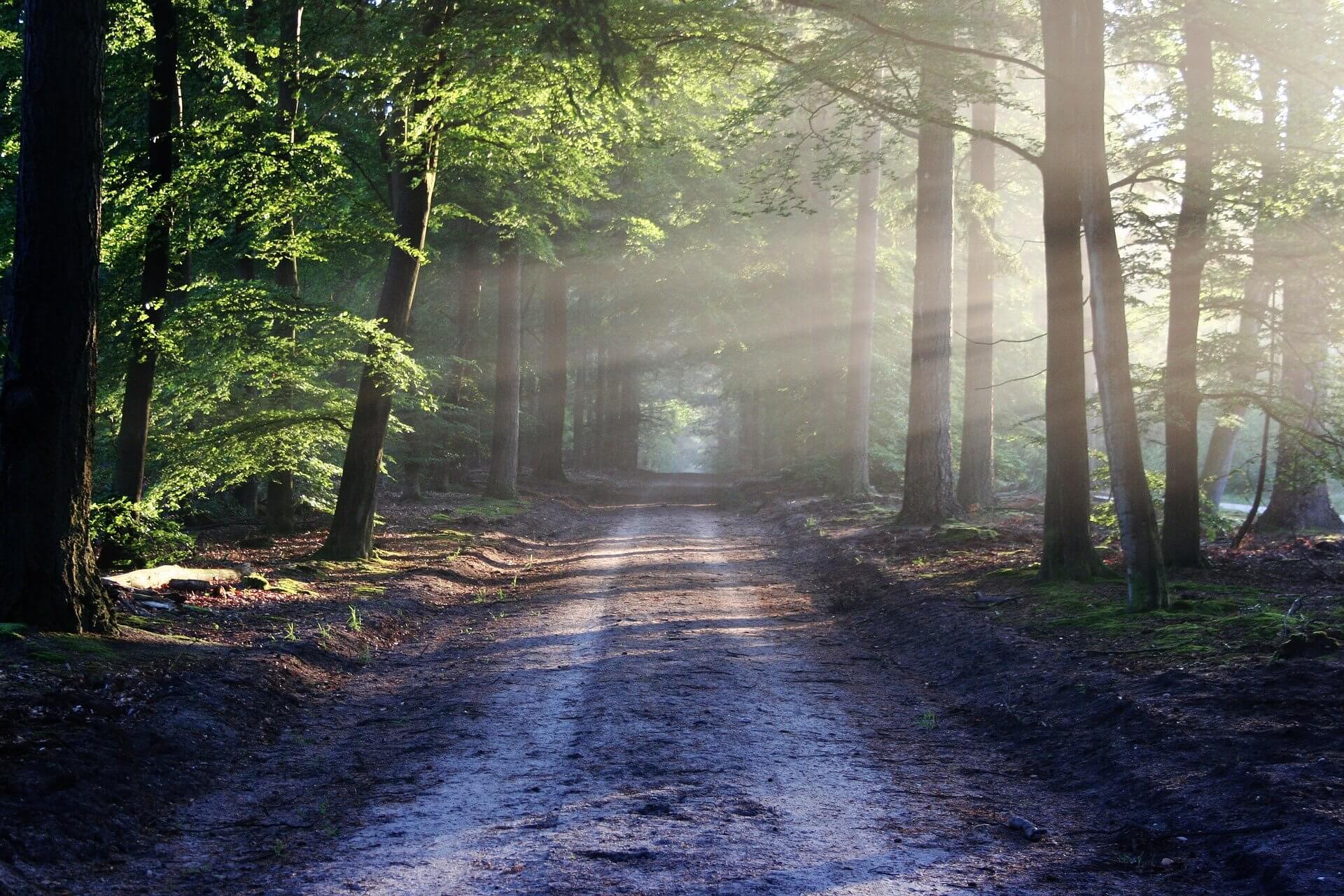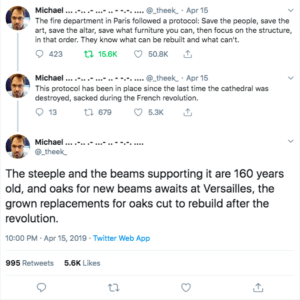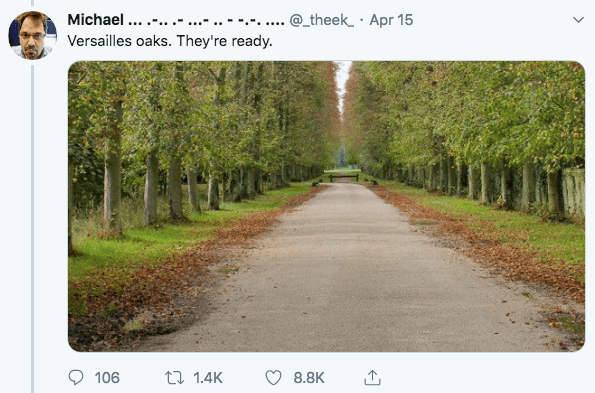
It wasn’t long after news of the Notre-Dame Cathedral fire spread that people starting talking about how we might rebuild it. However, work to repair the damage caused by the fire might have already started.
In fact, it might have started over 160 years before the fire occurred.
This isn’t the first time Notre-Dame Cathedral has required major restoration. In the 1840s the Cathedral required extensive repair work to fix the significant damage caused during the French Revolution. It was at this time that many of Notre-Dame’s most famous features were added, including the gargoyles and the ill-fated spire.
According to Twitter user Michael Slavitch, it was also at this time that work began on preparing for future restorations.
The story goes that the team behind the 1840s restoration knew the mighty wooden roof beams would need to be replaced in the future. They also knew that replacing beams of that size would require around 1,300 mature oaks – or a forest the size of 15 football pitches, if you prefer.
It would have been easy for them to leave this problem to future generations – a challenge for their great, great, great, great grandchildren to solve. Instead, Slavitch says, they adopted the problem as their own.
The solution? To plant a forest of oak trees at Versailles, ear-marked specifically for the future replacement of Notre-Dame’s roof. This would mean that, when the time came to replace the beams, there would be enough trees of the perfect size to provide their successors with all the wood they would need.
Sadly, the story is almost certainly not true. However, it still got me thinking about the needs our organisations might have 100+ years from now, and what seeds we should be planting today to ensure our successors have the resources they need in the future.
“Short Now” versus “Long Now” thinking
In one of his tweets, Slavitch described the story as being an example of “The Long Now in action”.
“”Now” is never just a moment. The Long Now is the recognition that the precise moment you’re in grows out of the past and is a seed for the future. The longer your sense of Now, the more past and future it includes.”
Brian Eno, Co-founder of The Long Now Foundation
The Big Here and Long Now, January 15 01995
The phrase ‘The Long Now’ was originally coined by Brian Eno as a reminder to a world increasingly obsessed with instant gratification and short-termism that we still have a responsibility to the long-term future.
Many charities are working on a “Long Now” timeframe. They know it will be decades (and, for some, centuries) before they will achieve their charitable mission and solve the societal problems they have committed to solving.
For example, Breast Cancer Now have set a target of 2050 to achieve their goal of nobody dying from breast cancer.
For other charities, their mission will never end.
This means that a lot of charities fundraising today will still need to be fundraising in 30 years time. Some might still be fundraising 100 years from now.
They are going to need some mighty oaks in future.

Yet it is almost unheard of for fundraisers to be thinking about the “Long Now”, or to make plans for how they can support the work of their successors decades down the line.
Instead, fundraisers tend to operate in the “Short Now”. This is in no small part down to the focus on annual fundraising targets, Business Plans that often span no more than 5 years ahead, and a trend for fundraisers to spend (on average) just 4 years in senior posts.
Our work is shaped by what Eno calls “short-horizon perspectives”.
Our success is judged and rewarded against these short-term targets, meaning fundraisers prioritise activities most likely to provide near-instant gratification. There is little time – or incentive – to think about the impact their actions might have across a longer timeframe.
But what would it look like if we took the same view as the apocryphal tree planters?
What if we assumed responsibility for the fundraising targets of the future?
We have no idea what the world will look like for fundraising leaders 100 years from now, or even in 30 years time. But there are some things they are almost certainly going to need:
They are going to need a sustainable forest of prospects and supporters.
And they are going to need a sustainable forest of talented fundraisers.
Whether you like it or not (and whether you chose to act on it or not), the actions you take today have a direct impact on the long-term future of your organisation.



